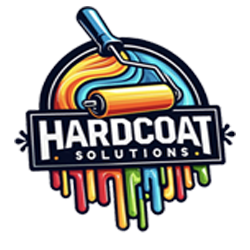When Do You Need Moisture Vapor Barriers?
Understanding moisture issues in concrete and when vapor barriers are essential for preventing epoxy flooring failures.
Critical Warning
Moisture vapor transmission is the #1 cause of epoxy flooring failures. Ignoring moisture issues can result in complete system failure, requiring costly removal and replacement of the entire floor.
Understanding Concrete Moisture Issues
How Moisture Causes Problems
Concrete naturally contains moisture that moves upward through the slab via vapor transmission. When this moisture encounters an impermeable epoxy coating, it becomes trapped and creates hydrostatic pressure.
This pressure can cause various failure modes including blistering, delamination, osmotic blistering, and complete adhesive failure. The problems often don't appear immediately but develop over weeks or months.
Common Failure Signs:
- • Bubbling or blistering of the coating
- • White hazy appearance (blushing)
- • Peeling or delamination at edges
- • Soft or tacky coating that won't cure
- • Fisheyes or crawling during application
Moisture Testing Methods
ASTM F1869 - Calcium Chloride Test
Measures moisture vapor emission rate over 72 hours using calcium chloride dishes.
Maximum Acceptable Rates:
- • Standard epoxy: 3 lbs/1000 sq ft/24hr
- • Moisture-sensitive: 2 lbs/1000 sq ft/24hr
ASTM F2170 - Relative Humidity Test
In-situ measurement of relative humidity within the concrete slab using embedded probes.
Maximum Acceptable RH:
- • Standard epoxy: 75% RH
- • Moisture-sensitive: 70% RH
Testing Requirements:
Always test multiple locations, especially in areas with different exposure conditions. Test near walls, in the center of rooms, and areas with different sub-grade conditions. One test per 1,000 sq ft minimum, with at least 3 tests per project.
When Moisture Vapor Barriers Are Required
High Moisture Readings
- • MVER > 3 lbs/1000 sq ft/24hr
- • RH > 75%
- • Any reading above coating limits
- • Inconsistent or variable readings
Below-Grade Slabs
- • Basements and sub-grade areas
- • Slabs on grade without vapor barriers
- • Areas with groundwater concerns
- • Poor sub-grade drainage
New Concrete
- • Concrete less than 90 days old
- • High water-cement ratios
- • Inadequate curing conditions
- • Dense, low-permeability concrete
Environmental Factors
- • High humidity environments
- • Temperature differentials
- • Seasonal moisture variations
- • HVAC system changes
Previous Failures
- • History of coating failures
- • Visible moisture problems
- • Efflorescence or mineral deposits
- • Mold or mildew issues
Risk Mitigation
- • High-value flooring systems
- • Critical operational areas
- • Long-term performance requirements
- • Warranty considerations
Moisture Vapor Barrier Options
100% Solids Epoxy MVB
The most common and cost-effective solution for most moisture issues. Provides excellent adhesion and vapor blockage.
Polyurea Moisture Mitigation
Advanced solution for extreme moisture conditions. Fast-curing and extremely durable with superior moisture blocking properties.
MVB Decision Matrix
RH < 75%
RH 75-85%
RH 85-95%
RH > 95%
